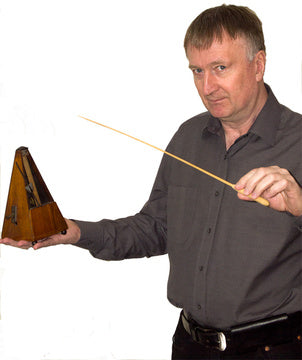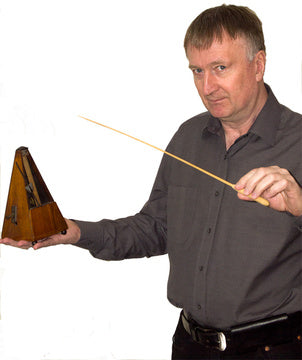Loading...

Issue 12



Up the Ladder
I am responding to the recent article on DACs and the quick brush-off of ladder DACs.
(Richard Murison’s “My Kingdom for a DAC”, Richard didn’t brush off ladder DACs so much as say that they were damned hard to build properly –Ed.)
There are several R2R or ladder DACs on the market and in my opinion and that of many others they are far superior to any delta-sigma DAC on the market. The best example is the Audio-GD Master 7 dac. Also, the great Audio Note DACs are ladder DACs. These DACs have a musicallity that delta-sigma DACs dream about. Delta-sigma dacs are used mostly because R2R chips are simply too difficult and expensive to make.The old R2R chips are expensive, hard to find and no longer in production.
I believe Mytek is making an R2R chip and Audio Note has one in development. Did a recent comparison of my Master 7 with a friend’s DCS stack and even he thought the Master 7 was better. The DCS is 10 times the price. Yes, a ladder DAC will not do DSD, but for me that is no great loss.
Alan Hendler
Doesn’t Like Tchaikovsky Either
Three cheers for Mr. Schenbeck. He writes concisely and entertainingly and, with his adroit embedding of musical examples, uses the electronic magazine format as it should be used. I look forward to each of his contributions.
Never much liked Tchaikovsky either.
Scott P
Lancaster, PA
What Happened To Scott?
Thank you for continuing to publish Copper. I just have one request – we need more music suggestions from Scott! In Issue #1, Scott introduced me to Kings of Convenience and I have been enjoying listening to their albums ever since. We need more music suggestions Scott. Please come back!
Jeff Maloney
Madison, WI




John Hartford
One day about twenty-five years from now,
When we’ve all grown old from a-wondering how,
Oh we’ll all sit down at the city dump,
And talk about the Goodle Days.
Well you’ll pass the joint and I’ll pass the wine,
And anything good from a-down the line.
A lot of good things went down one time,
Back in the Goodle Days.
—John Hartford, from Aereo-Plain, 1971
In 1541, long before bread slicers were invented, Hernando DeSoto supposedly became the first European to see the Mississippi River. I say supposedly because he had to have had a scout who would’ve seen it first, but History is a cheating mistress.
No matter the circumstance, that had to have been a sight. The namesake of some of the ugliest automobiles in history, DeSoto had come from Spanish Florida and with 600 men went north and west to discover gold. He never found gold, but he did find that river, the heartbeat of America, a mile wide at some points, and at other places you could walk across without getting your socks damp.
John Hartford was born in New York City in 1938. While young his family moved to St. Louis where the river grabbed his ears and started singing to him. He grew up with two fascinations, the River and Music. He often said he would have worked on the river all his life but music interrupted. Thank you Lord.
At 13 John was an accomplished old time fiddle and banjo player. By the time Hartford was in his 20’s he’d moved to Nashville and had impressed enough people with his playing and songwriting that he recorded his first album in 1966.
In 1967 his second album was released with a new Hartford tune called “Gentle On My Mind”. The song was a sadly beautiful love song, and it caught the attention of Glen Campbell who made it his first #1 hit. Won 4 Grammys in 1968, two for Hartford. I still prefer hearing John sing it with just banjo, it’s a real killer lyric. You’ve all heard it but few have listened. The royalties followed John the rest of his life, and financed his simple career.
Hartford moved to the West Coast and began appearing on The Smothers Brothers Show and the Glen Campbell Goodtime Hour. If any of you are old enough to remember the Campbell show he did an occasional spot where he’d take a guitar and sing a song, accompanied only by a pre-long haired hippie Hartford playing banjo, or fiddle, guitar or mandolin. I remembered even though young and not listening to Bluegrass yet, and certainly couldn’t relate to Country. I remembered because I’d never seen this on a mainstream variety show, and had definitely not seen a format like this on any TV show period. Couple of guys just jamming on a park bench.
In 1970 Hartford became fast friends with David Bromberg. John wanted to make a non-traditional bluegrass/folk album that was deeply rooted in old time music and pot smoking. He talked Bromberg into producing Aereo-Plain with some of the master studio musicians of the day. Tut Taylor on dobro, Vassar Clements on fiddle, Norman Blake on guitar, and Randy Scruggs on electric bass. Except for the bass all instruments were acoustic, and recorded without overdubs or playbacks. They just played the song until Hartford and Bromberg were satisfied they had the right one in the can. Didn’t listen to any of the takes until they mixed it. Given the beauty of the tracks, that is fantastic. Without a stretch of any means, this was the Kind of Blue of Newgrass/folk/whatever.
Either because of that approach or in spite of it, Aereo-Plain changed bluegrass and not a few of my friends for the rest of our lives. Sam Bush (New Grass Revival) said “Without Aereo-Plain there would be no Newgrass”. Warner Brothers wasn’t impressed, and hardly promoted the album. Didn’t matter. That thing went from hand-to-hand across this country like DeSoto with the clap. Still considered one of the greatest string acoustic studio albums, ‘Aereo-Plain’ was and is a delight.
Bluegrass, an old and gasping genre, got a huge shot in the arm. There were many influences of the Newgrass/Bluegrass awakening, and those influences all blew up together with Hartford. Sam Bush started New Grass Revival with Courtney Johnson in 1972. Suddenly every summer there were fiddle contests everywhere. Guys like Doc Watson, Bela Fleck, Marmaduke, the New Riders of the Purple Sage, Buddy Emmons, Commander Cody, David Grisman with Old and In The Way (with Jerry Garcia on banjo), and The Country Gentlemen appeared out of nowhere and appeared everywhere. The class still breathes today with the likes of The Punch Brothers, Alison Krauss, Jerry Douglas, and Trampled by Turtles. Hartford himself pointed back at Earl Scruggs, the nominal inventor of the three finger banjo style as the guy who started it all.
But above all of them John Hartford played with beauty, an obvious passion for his instruments, and a humble humor that shone through his smile and laughter during his live and studio performances. Mark Twang, a studio vinyl released in 1976 featured John by himself with a mike for his voice and instruments, and a mike for a piece of plywood he tap danced on for percussion. He talks and laughs through the introductions as well as the songs, all river songs and other ‘eccentric gems’ (critic).
This album was done specifically to capture the magic of a John Hartford live performance, where he’d get on stage with no amps, a few instrument cases, and that piece of plywood he miked up for his happy feet.
I had the true honor to see him a few times at an old stone mill turned nightclub in Willimantic, CT called the Shaboo Inn. That old barn seated 900 people, maybe 937 if you were willing to sit in the rafters. The stage was a platform maybe 4 inches high and gave a real close view to any act there. Artists loved the place, and often stopped in between gigs in Boston and New York. Situated between 2 rural colleges (UConn and East CT State) the audiences were appreciative, wild, and close.
I was in line with Diane before the doors opened one night and there was a commotion at the back of the line. I felt someone brush past me, a guy with long black hair carrying a couple of cases. It was John Hartford carrying his crap in by himself. As he went back out for his second and last trip, we saw him pull his stuff out of an old Ford Falcon wagon. I swear he had a couple of maple leaves stuck to his back like he slept in the back of that thing. Hartford often said he lived his life on the royalties of “Gentle on My Mind” by living simply, and I believe it.
He had a love of old folk and bluegrass, and he dedicated his life to reliving it. We enjoyed that trip, but it was his originals that always captured the imagination of millions with his passion, and especially that sense of humor. You have to hear “Don’t Leave Your Records in the Sun” to truly appreciate it.
Sometime during the 70’s Hartford got his river pilot license, and in between touring he worked on the steamboats and tugs on the Big Muddy as well as the Tennessee and Illinois rivers.
Also during the 70’s I picked up the guitar, fiddle and mandolin, and later the banjo. All because of John and his music. I was listening to Mark Twang last night while I was working on this piece, but I got completely distracted. You can’t listen to that and do anything else. I ended up listening to that album and had to finish this thing tonight.
John played all his life with the song of the great Mississippi singing in his ears. In the 80’s he contracted Non-Hodgkin’s Lymphoma, and by early 2001 he had to stop playing. The combination of that loss and the disease took his life on June 4 2001. My 47th birthday. I will never forget that moment.
Watch this video of two songs with my love and joy, to get a small sense of who and what was a John Hartford.


Stan White: Visionary? Or…?
This column is different from previous installments of Vintage Whine, in two ways:
1. Previous subjects were pretty well known—for anyone familiar with the history of the American audio industry, anyway. Stan White isn’t well known.
2. Stan White is the first subject I’ve known, personally—which makes this both easier, yet more difficult, to write. The reasons will become clear as we proceed.
For audio geeks of the pre-internet era of the ‘70’s, classified ads in the back of Audio magazine were the best source of news about leading-edge tech as well as breaking brands and products. Given the when?-if-ever publication schedules of both Stereophile and TAS during that era, blurbs in the Audio classifieds often preceded news pieces in the other mags by as much as a year. –And as far as tweak brands went, fuhgeddabout Stereo Review and High Fidelity, the mainstream consumer audio mags of the day. Audio itself tap-danced between stodgy tech reporting (the brilliant but often opaque Richard Heyser), and a surprisingly whimsical view of the worlds of music and audio (Edward Tatnall Canby, Bert Whyte, Professor I. Lirpa!).
As with tiny classifieds everywhere, one could find sincere announcements of major breakthroughs, right next to straight-faced declarations of bombastic hype. That’s where I first encountered Stan White—somewhere between those two extremes.
Somewhere around ’75-’76, as a teenager already fully invested in high-end audio (intellectually, if not financially—I was a charter subscriber to TAS, because of another classified ad in Audio), I saw display classifieds in Audio for “Shotglass” glass-coned speakers from Stan White. I initially assumed that meant cones made out of something like my mother’s Pyrex baking dishes. “How is THAT supposed to work?”
Without knowing it, I’d been introduced to Stan White’s marketing, which often included cutesy, somewhat vague terminology that baffled as often as it enlightened, leaving one feeling a little annoyed. Ever had a too-loud uncle who tried too hard to be “hip”? Yeah, like that. The backlash of the Vietnam war was way too many graying guys with long sideburns and flowered shirts. My first take on Stan White and his products was of such a character, selling speakers that had barely escaped from a white van (no pun intended).
I was both right and wrong.
When my children see movies or TV from the psychedelic era of the late ‘60’s through the early ‘70’s, they tend to roll their eyes. My standard comment to them is, “you had to be there”. Viewing such things dispassionately from a distance cannot explain the laughable monstrosities of the era: think Bing Crosby’s wince-inducing album, Hey Jude, Hey Bing. How on Earth could that have been thought to be a good idea? –and yet, there it is.
Similarly, to look at either the White speakers or the sales brochure shown in this ebay listing is to cringe: who thought of the Bozo the Clown color scheme of sky blue driver-surrounds and clown-nose red center cap against a whitish cone?
Who was this guy Stan White?
Here’s what I know, based upon email correspondence and phone conversations with Stan, which took place between 2003-05: Stanley Fay White was born in Minneapolis circa 1920, and lived in St. Paul until the death of his mother when he was 7. Where he went from there, I don’t know–but he became involved in studying Physics, and like many others, enrolled in the armed forces in WW II.
Stan told me, “ I was a transatlantic weather forecaster. I was part of a small group that destroyed the U-Boat menace in early 1943. (planes and depth charges). I never lost a plane due to faulty forecast, ever. I was put in charge of General Brooks (Brooksfield, Texas) headquarters weather station at age of 21. I was the General’s pet. He used to win bets on my forecasts.” He also served for 18 months during the Korean War.
After being discharged the second time, Stan designed and began marketing speakers and amps that showed a curious mix of advanced technology and bombast. Look at this collection of ads and pics, and you’ll see technical claims that might cause an eyebrow to be raised, along with pretty girls and celebrity endorsements: Duke Ellington, great—but Charlton Heston?!? http://www.itishifi.com/search/label/Stan White
The ad for Stan’s “4D” speaker is noteworthy not just for the lovely young lady in the bizarre outfit, but for grandiose claims of superiority which are accompanied by surprisingly little information. Stan’s was certainly not the only hi-fi company whose ads featured such lingo—it was the ‘50’s, era of tail-fins— but even for the time, “4-dimensional sound with power and clarity you must hear to believe” and “THE MIRACLE OF MULTI-FLARE” are a little over the top.
Even a product info sheet simply describes the 4D as having “horns, horns, and more horns”. Its 5’7” height and 400 pound weight indicated it was a substantial product, and the 1954 price of $1500 was a substantial investment, as well. That’s around $13,400 in 2016 bucks.
That $1500 price was also more than double the cost of a JBL Hartsfield or Electrovoice Patrician, widely regarded as the best of the day. A Klipschorn was only about a third of the price of the 4D. In all the years I’ve dealt with vintage gear, I’ve never seen any Stan White speaker, much less a 4D, nor have I ever met anyone who had experience with them.
Were the 4Ds real, or just imaginary halo products created to cast glamour upon lesser speakers? I’m not sure.
Next time we’ll look at some patents, and some info that indicates that a bright mind was at work. But always…that hype….
Bill Leebens has bought and sold vintage gear since the days when it was new. He regrets that a goodly number of classic American components now reside in Japan, because of him. Mea culpa.
Fully Armed
Once we have established a firm base for our turntable, and have it revolving flutter- and wow-free, we need to add an arm and cartridge to decode all those tiny, tiny, grooves filled with musical information. They are in essence dynamic explosions, as pointed out previously: some 30 tons per square inch of energy.
The name ‘tone arm’ is interesting, and in the current form of record replay, the last thing we actually want are ‘tones’ to be added by the arm! Of course the phrase developed in the acoustic gramophone era; the ‘tone arm’ was an integral part of the acoustically-amplifying arm, with a ‘sound box’ on the end, rather than an electric device like a cartridge.
Throughout the 1930s electric ‘pick-ups’ replaced the purely acoustic variety. Playing pressures dropped from pounds to ounces, and a one-piece molded arm (usually plastic or Bakelite) had been fitted with a simple coil in which a steel needle was fitted down the middle of the coil.
After World War II, the English company DECCA Records produced the first true high fidelity system, Full Frequency Range Recording (FFRR) , which used a much more sophisticated pick up design. Hot on the heels of this development were of course the 33 1/3 RPM LP, and singles, spinning at 45.1 RPM. Both of the latter were true ‘microgroove’ (early 78s being ‘coarse groove’) discs.
By the late 1950s, stereophonically-recorded discs added another twist. In a mono disc the stylus only moves in the horizontal plane; in a stereo disc, the stylus moves vertically too, with each side of the groove wall containing the separate channels— hence the 45/45 cut. A stereo disc will be ruined by inappropriate use of a mono pick-up, and the stylus for the ‘new’ stereo discs, was even smaller than the ‘new’ microgroove.
It was common in the 1950s for manufacturers to build and sell a matching arm and pick-up cartridge as a package. DECCA’s classic FFSS (Full Frequency Stereophonic Sound, the successor to FFRR) pick-up system was available with three pick-ups: red for 78s, green for mono microgroove, and white for stereo microgroove. EMI’s stereo pick-up package was similar, as was that of Ortofon. At the more budget end, a deck would come complete with a fitted arm and suitable, usually ‘turn over’ cartridge, with a 78 stylus on one side, and an ‘LP’ stylus on the other.

The tone arm that really broke away from this mold was the classic SME 3009/3012. Rather than fixed geometry, the SME design was ultra flexible, allowing usage of a wide range of cartridges. The arm remained pretty much a reference until the 1970s.
The majority of arms made to today, or through the 1960s use some kind of ball race for horizontal movement, with a fixed pair of bearings for vertical, up and down movements. (REGA, Linn, etc – SME used a ball race, and the famous knife edge bearing). Of course the ball race has to be as smooth as silk, friction-free, and noise-free. Gimbals can be used, and offer a much smoother system than a ball race (the earliest I have in my collection using a gimbal is a LEAK arm and moving coil pick-up, the most recent an Alphason Xenon). Highly underrated in general is the uni-pivot, which can come in ultra low mass, ultra high mass, and even oil damped.
A few other clever systems have been tried. The famous Well Tempered Arm uses a microfiber thread, from which the arm is hung; the arm base ‘damped’ in a large bath of fluid, which provides the mechanical grounding. A recent twist on this tale (no pun intended) is Clearaudio’s magnetic bearing. It is not a true magnetic bearing at all, but similar to the Well Tempered , a strong (this time metal) thread ‘anchors’ the arm to the base, from which it pivots and twists, and an extremely powerful magnet system holds the cable taut, and provides some mechanical damping. Clever, but in my experience, the sonic results aren’t that impressive.
That leaves us the so called ‘holy grail’, the parallel-tracking tone arm. Fantastic idea in theory, the record is played in exactly the same style as the way it was cut, reducing tracking error to a theoretical zero. These designs fall into three distinct categories.
The first popular type was the RABCO. This used a pretty primitive mechanical system, with a small electrical motor being used to propel the arm. As the arm was playing through a record, the arm would move out of true alignment slightly, and a small rubber wheel (I’m simplifying this!) engaged onto a spinning shaft which helped propel the arm base down its linear track. Sticking, jumping, and mechanical noise are quite major issues.
RABCO was wiped out by a more sophisticated electronic European competitor, which further inspired Japanese competition. Bang&Olufsen threw everything in to the Beogram 4000. Industrial design by Jacob Jensen (a personal hero) leaf spring sprung suspension, a fantastic main bearing, and electronics, lots of electronics! The arm featured an electro-optical sensor on the rear of the arm; so there was nothing mechanically touching, a huge improvement on the RABCO. This operated an electronically controlled servo motor to gently pull the arm along. This still generates noise, and the arm still has to go in and out of alignment all the time, but with an ultra light tonearm with one of B&O’s superb moving iron cartridges on the end, it was quite successful. Even if, despite high costs, it could be blown out of the water by much simpler decks at half the money. But what an influence this deck had! Look at Technics range of parallel trackers. They stole the entire concept, even down to the T4P plug in cartridge, a pure rip from B&O. And some of these don’t sound that bad!!
There have been a couple of attempts to make a non powered arm. The Souther and Nottingham Analogue arms had a go; both pretty useless, in my mind. But the models that really gain excitement are the ‘air bearings’. To break friction, something the other arms mentioned in this paragraph totally failed to do, the arm rests on a cushion of compressed air. Air bearing arms are possibly the most recognized sub-set of parallel trackers, but are not without their issues. Air is not the most dense or strong of materials, even if you compress it. Air bearing parallel trackers are more ‘hover arm’ than a firmly-grounded arm, and to my ears, I prefer a more solid connection. Never mind the noise the air pump makes….
Back to more conventional arm designs. Obviously, sticky bearings are going to spoil the party, so nothing but the finest engineering should be utilized, and clearly the arm’s geometry must be spot on, as well . As it is plainly obvious the arm itself will have a tonal and resonant effect on the sound, it should be self-damped as much as possible through shaping and construction. One piece arm and head shell units, such as the Xenon and HR100s designed by Mike Knowles at Alphason design, are one very valid approach to providing self-damping.
Rigidity and strength are also worthy obsessions, but both the overall mass and the “compliance factor” need to be watched. Simply put, the lighter the cartridge mechanism and overall weight, the lighter the arm should be to match it. For record wear the lighter the better. But just to be awkward, the most linear cartridges tend to be heavier moving coils, with large saturating magnets, which tend to offer a better sound.
Luckily, these days most modern arms are quite happy with a reasonable range of cartridges, and most cartridges seem to be around the 6-10 gram in weight mark. Some do get it very wrong; I was amazed at one budget manufacturer who fitted an incredibly lightweight carbon fibre arm, with a moderately heavy cartridge. The result was it jumped on most of my 12” 45s – this is very basic stuff!
I am shocked when I look at some arm designs, as it is clear that a lot of so called ‘experts’ don’t really have that much of a clue. Unlike electronics, there are very few texts about arm design, and most of them are from the 1960s. So it does take a pure mechanical genius to come up with something really new.


What Is a Song?
Warning: more Beatles content.
Of course, they’re many people’s favorite band (including, obviously, mine), so it’s not a surprise, but there happen to be a number of Beatle-related events around my life at the moment.
A couple weeks ago I went to an LP listening event—the UK mono version of Revolver was played at the Grammy Museum, at something called the Record Theater. I went as a guest of one of the perpetrators. Beforehand, we had a series of emails that brought writing this column to mind.
His argument was that the Fabs’ earlier songs were the better ones — although Revolver was a truly great album. But Revolver is where my real interest in music starts. And the audience for an article like this is the perfect audience to make my argument to.
I hear songs like “Tomorrow Never Knows” and “Within You Without You” as fully within the tradition of the art songs of Schubert, Ives and so many others. I’m pretty sure Lennon and Harrison didn’t know that, and neither did I until much, much later. I first heard that tradition during later high school and college, and although I didn’t relate the form of one to form of the other at the time, I had become aware that there was a long history of songs comprising many kinds of structures and techniques – including pure tape construction.
Yes, you can play “And I Love Her” on similar instrumentation and in similar venues to “For No One”. It will take a wider palette to achieve “Tomorrow Never Knows.” Possibly even playing back a tape for an audience. And that’s where — well, maybe I’m just weird. But this is the “school” I grew up in, so plainly, I ain’t alone.
By the time the Beatles came along, there had already been decades of songs –– small, short works with vocals — breaking free from constraints of form, of venue, of methodology. Whether they knew it or not, they didn’t break new ground, but in ’66 they freed up their works from the standard issue pop constructions and constrictions.
And that’s where my ears grabbed onto it — although I didn’t know that, then, either. It made me a bit of an oddball with some of the folks I used to work with, because they defined songs much more narrowly for the most part. But it meant that I fit right in with, say, Jon Hassell. There aren’t lyrics per se in Hassell’s work, but there are voices. How they are used, and what they say, convey Jon’s meaning every bit as much as, “Bright are the stars that shine“, “The day breaks, your mind aches” or “This is not dying”.
Listen to a song like “The Postman” from David Baerwald’s Triage (1992). There are many voices: Baerwald’s, of course, but many others, “sampled in”, each contributing to the effect of the song. We could play it live — now. I think to pull it off 50 years ago would have required a stripped-down version, just me on 12-string and David singing (as in the studio), or us along with a very creative use of tape.
Of course, my friend’s argument isn’t, what constitutes a song? It’s, what constitutes a really good song? But now we’re into taste, and my taste turns out to be far too wide to feel that ranking one Beatles era-song over one from another era is a worthwhile effort. They are all songs, it’s all music — and some of it, to quote a character from a different art form, “burns very, very bright.”
Dan Schwartz is a parent, sort of a husband, and has been a musician of some years, having played on quite a few records – and even a few good ones. He’s recorded or played with Rosanne Cash, Bob Dylan, Jon Hassell, Brian Eno, Bernie Leadon, Dave Navarro, Linda Perry, Sheryl Crow, Stan Ridgeway, and was a member of the Tuesday Night Music Club. In his spare time, he used to write for Harry and Sallie at the absolute sound and the Perfect Vision. Professionally, he keeps trying to leave music, but it keeps coming to get him.
: more Beatles content. Of course, they’re many people’s favorite band (including, obviously, mine), so it’s not a surprise, but there happen to be a number of Beatle-related events around my life at the moment. A couple weeks ago I went to an LP listening event—the UK mono version of Revolver was played at the Grammy Museum, at something called the Record Theater. I went as a guest of one of the perpetrators. Beforehand, we had a series of emails that brought writing this column to mind. His argument was that the Fabs’ earlier songs were the better ones — although Revolver was a truly great album. But Revolver is where my real interest in music starts. And the audience for an article like this is the perfect audience to make my argument to. I hear songs like “Tomorrow Never Knows” and “Within You Without You” as fully within the tradition of the art songs of Schubert, Ives and so many others. I’m pretty sure Lennon and Harrison didn’t know that, and neither did I until much, much later. I first heard that tradition during later high school and college, and although I didn’t relate the form of one to form of the other at the time, I had become aware that there was a long history of songs comprising many kinds of structures and techniques – including pure tape construction. Yes, you can play “And I Love Her” on similar instrumentation and in similar venues to “For No One”. It will take a wider palette to achieve “Tomorrow Never Knows.” Possibly even playing back a tape for an audience. And that’s where — well, maybe I’m just weird. But this is the “school” I grew up in, so plainly, I ain’t alone. By the time the Beatles came along, there had already been decades of songs –– small, short works with vocals — breaking free from constraints of form, of venue, of methodology. Whether they knew it or not, they didn’t break new ground, but in ’66 they freed up their works from the standard issue pop constructions and constrictions. And that’s where my ears grabbed onto it — although I didn’t know that, then, either. It made me a bit of an oddball with some of the folks I used to work with, because they defined songs much more narrowly for the most part. But it meant that I fit right in with, say, Jon Hassell. There aren’t lyrics per se in Hassell’s work, but there are voices. How they are used, and what they say, convey Jon’s meaning every bit as much as, “Bright are the stars that shine“, “The day breaks, your mind aches” or “This is not dying”. Listen to a song like “The Postman” from David Baerwald’s Triage (1992). There are many voices: Baerwald’s, of course, but many others, “sampled in”, each contributing to the effect of the song. We could play it live — now. I think to pull it off 50 years ago would have required a stripped-down version, just me on 12-string and David singing (as in the studio), or us along with a very creative use of tape. Of course, my friend’s argument isn’t, what constitutes a song? It’s, what constitutes a really good song? But now we’re into taste, and my taste turns out to be far too wide to feel that ranking one Beatles era-song over one from another era is a worthwhile effort. They are all songs, it’s all music — and some of it, to quote a character from a different art form, “burns very, very bright.” Dan Schwartz is a parent, sort of a husband, and has been a musician of some years, having played on quite a few records – and even a few good ones. He’s recorded or played with Rosanne Cash, Bob Dylan, Jon Hassell, Brian Eno, Bernie Leadon, Dave Navarro, Linda Perry, Sheryl Crow, Stan Ridgeway, and was a member of the Tuesday Night Music Club. In his spare time, he used to write for Harry and Sallie at the absolute sound and the Perfect Vision. Professionally, he keeps trying to leave music, but it keeps coming to get him.The Boganyi Piano
Born into a musical family in 1974, Gergely Boganyi was raised to be a concert pianist, and began amassing awards at an early age. At 19, he won Chopin and Mozart competitions in Budapest; at 20, the piano competition at Indiana University-Bloomington; at 22, he won the International Franz Liszt competition in Budapest, and was named a “Citizen of Honor” in his hometown of Vac, Hungary.
Having played many of the best instruments in the world, Boganyi concluded that development of the piano had stalled. Working with the Mono Group, a manufacturer of high-quality wood, aluminum, and carbon fiber automotive trim pieces, Boganyi envisioned a carbon fiber instrument with a composite soundboard that would be immune to the effects of humidity. Industrial designer Peter Uveges created a form in which the supports were integral to the design, not merely added-on legs.
Love it or hate it, it is a formidable piece of work. At present, only three Boganyi pianos exist, and its price of 65,000,000 Hungarian Forints—roughly $228,000 US— ensure that it will remain a rare sight.
The piano resides at the Aria hotel in Budapest.


The Shock of the Old
What’s Old? In classical music, everything and nothing. Steve Reich is 80. Bach is dead; so are Cage and Satie, Ives and Varèse, Morton (Feldman) and Milton (Babbitt). So what? Their music still unsettles folks raised on Tchaikovsky and Dvořák. Given the right energies in the right hands, Tchaikovsky and Dvořák can unsettle us too—see below.
Solitary Pursuits
William Lawes (1602–1645), gentleman, soldier, and musician, served at the court of Charles I. Rushing passionately if unwisely to the siege of Chester during the English Civil War, he met an untimely end. Robert Herrick lamented his passing in verse; you can read it here. (Lawes and Herrick had collaborated on “Gather ye rosebuds while ye may.”) Respected in his own time, Lawes could never have predicted how brightly his flame would burn long after his death.
When we consider Lawes’ music for lyra viol, an instrument upon which he excelled, a scene forms in the mind: at leisure in his quarters, a man paces restlessly. He fingers a nearby viol for a moment and, on a whim, decides to sit and play. Opening Lawes’ new collection, he tunes the viol, begins to work bow on strings. Tentatively, then with increasing engagement, our gentleman coaxes music into his chamber. Finally a familiar and welcome transformation occurs: what began as idle play has become recreation in every sense. He is no longer restless, no longer alone.
William Lawes: Complete Music for Solo Lyra Viol. Richard Boothby, viol. (Harmonia Mundi HMU 907625). Warmly recommended.
But perhaps you find that corner of Lawes’ output too ascetic to serve as a proper introduction to his music. May I suggest—even more warmly—Phantasm’s excellent Lawes: The Royal Consort (Linn CKD 470)? This well-recorded, well-played set of ensemble works offers contrapuntal and timbral richness at which the solo viol music can only hint. Phantasm’s whole Lawes series has drawn high praise across the board; I am slightly embarrassed to find myself joining them so late in the day. Listen:
It’s still early days for Rachel Barton Pine’s new recording of the Complete Sonatas and Partitas for Solo Violin by J. S. Bach (Testament, Avie AV 2360). But why not rush passionately to get these satisfying performances? Pine combines effortless technique with such profound musicality that each movement flows like epic discourse, something from Homer or Plato. No way to summarize the riches on display with a clip or two, so instead we’ll offer a YouTube moment from the 2014 Ravinia Festival:
Not Quite Solitary
If you can imagine Lawes’ solo viol works as a journey inward—a meditation on solitude—you can think of Bach’s solo violin music as outward-facing, a Lonely Planet Guide to the cosmos. The keyboard sonatas of Domenico Scarlatti (1685–1757), on the other hand, fill a more conventional social niche. Scarlatti wrote them for his pupil and patron Maria Barbara, who became Queen of Spain. Court life proved tedious to this intelligent, talented woman, so as a respite she asked her old mentor to supply keyboard sonatas, lots of them.
Scarlatti astonished not only the Queen but also himself with his creative efforts, ultimately amounting to well over 500 works. They teem with the sounds of Spain’s streets and countryside, presenting prodigious technical demands as well—apparently Maria Barbara was as fine a harpsichordist as her teacher. Again a scene forms easily in the mind: the two sitting at a pair of the Queen’s many instruments, delighting each other with improvised variations, “ingenious Jesting with Art,” in Scarlatti’s words.
Yevgeny Sudbin’s nourishing sampler, Scarlatti: 18 Sonatas (BIS-2138) illustrates the full range of Scarlatti’s “topics” while showcasing Sudbin’s formidable skill. Listen:
And how about this?
If you like that, check out Sudbin’s Vol. 1 next.
Community Efforts
Okay, let’s play some standards! First up: a richly realized live performance of Dvořák’s Symphony No. 8, coupled with an even juicier Serenade by his son-in-law Joseph Suk, from Mariss Jansons and the great Symphonieorchester des Bayerischen Rundfunks (BR Klassik 900145; CD or download). This outing shows both conductor and ensemble at peak strength. The orchestra’s depth of talent is especially apparent in divisi string passages and vibrant woodwind playing. Jansons’ performance convincingly balances the Eighth’s vivacious moments with more ruminative murmurings. The Adagio, modeled after the funeral march of Beethoven’s “Eroica” Symphony, is followed by a wistful, Brahmsian dance movement. The finale begins with similar melancholy but rouses itself by degrees:
Suk’s Serenade, lighter in spirit, is delivered with great affection.
You will find yourself returning again and again to these wonderful performances. There’s something ineffably Czech about their mix of light and shade, fervor and sadness.
Brief comments now about two other albums. First, AQ’s raves in TAS for Steven Isserlis’s Elgar & Walton Cello Concertos (Hyperion CDA68077) are fully justified. I’ve been playing his Elgar alongside the classic Du Pré/Barbirolli recording, and it does not suffer by comparison. You will enjoy this more nuanced, lyrical approach.
César Franck (1822–1890) did not complete his Piano Quintet until he was 57. But what a tempest it depicts! Franck was apparently moved to create this passionate work by his relationship with Augusta Holmès, spirited French-Irish composer who studied with him privately and attended all his classes. Rimsky-Korsakov described Holmès as “very décolletée”; Saint-Saëns had proposed marriage to her (she turned him down). Madame Franck hated the piece and reportedly hated her husband’s pupils for driving him to write it. Saint-Saëns, pianist at the first performance, was so enraged by the music’s wildness that he stalked off stage immediately afterwards.
A new recording by the Takács Quartet and Marc-André Hamelin (Hyperion CDA68061) brings out all the passion but also underlines Franck’s suavity and formal control. From the outset, the music aims for maximum contrast:
Things heat up, then heat up further. Recommended!
Lawrence Schenbeck was born on a mountaintop in Tennessee. In spite of that, he became a historical musicologist. He is the author of two books, many more scholarly articles, and countless liner notes, music reviews, and “casuals.” He lives in the Atlanta area with his family and too much music, Tchaikovsky being the least of it. Literally.


Is It Worth It To You?
During election season, we hear a lot of talk about “values”. We are not (thank goodness!) going to pursue the subject of personal values, the much-abused term that is at the heart of way too much campaign rhetoric. Instead, we’re going to take a look at a different sort of personal value, namely: how much is that thing worth to you?
The question obviously applies to most aspects of life. Just for the sake of avoiding an outburst of existential angst, we’ll stick to the subjects of audio, and music.
There are a lot of elements involved in determining value: the intrinsic worth of an item (the materials and workmanship required to make it), the deal offered (relative to the deal offered to everyone else), the immaterial influencers (is it just like the one dad had? Have I wanted one since 9th grade?—that pesky emotional baggage), and the market influencers (are there a million just like it? Is it the only one?).
Unless you’re emotionally frozen, there are triggers or associations that make things worth more or less for you. For example, in the vintage audio world, if I never see another Phase Linear 700 amplifier, I’ll be perfectly happy. The combination of an edgy sound quality and the experience of having seen several 700s after they’d burst into flames, ensure that I’ll never consciously seek one out. For others, reading Julian Hirsch’s rave review of the 700 when they were 15 might have marked it as an aspirational item, and propelled them into mowing lawns all year in order to buy one. Seeing one 40 years later might cause an overwhelming bout of nostalgia, and that person would likely pay more than any rational soul would.
Rarity, of course, has a major effect upon an item’s worth, and ironically, rarity is often more of a measure of societal rejection than of actual scarcity or merit. Consider the Dylan song, “It Ain’t Me, Babe”. Originally appearing on the album Another Side of Bob Dylan, it can often be found in Goodwill bins for 50cents or so, in either album or single version. But what if you simply must have that same song performed in the dulcet tones of actor Sebastian Cabot? Cabot’s 1967 album, Sebastian Cabot, Actor/ Bob Dylan, Poet in which he renders a recitative version of “It Ain’t Me, Babe”, is harder to find than Dylan’s original.
The whole issue of worth is one that almost all audiophiles encounter sooner or later; who amongst us has not heard the incredulous outburst from a friend or neighbor, “your stereo cost HOW much??”
Ironically, such comments often come from someone who just bragged about the cost of their new car or vacation house. Worth is reflective of personal priorities, and as such is highly personal: at the time I owned a system which included Magneplanar Tympanis tri-amped by Audio Research gear, a Nakamichi Dragon cassette deck and a Nakamichi Dragon turntable, I was driving a $200 Fiat sedan which looked as though it’d been run over by a semi. My wife didn’t care for the situation, but I was momentarily happy.
Clearly, there’s no accounting for taste…or worth!
Bill Leebens is Editor of Copper and Director of Marketing at PS Audio. He has been in and out of the audio business for over 40 years. Each time he returns to it, he becomes more cynical. He does not intend to go quietly.


Cocktail Party
You will all know the old chestnut where, if you focus clearly, it is often possible to pick out one individual conversation from among the hubbub of a noisy cocktail party. There may be a hundred people all talking at the same volume. Together, this forms the noise, and it sounds like we have a hundred times more Noise than the Signal, which is the one person we’d like to listen to. Clearly, the Noise overwhelms the Signal. Yet most of us have already performed this social experiment, so we know it is not too hard to actually listen to that one person. What, then, is going on here?
To understand this, we need to go back to the concept of noise. What exactly is Noise, and what makes it different from Signal? Basically, noise occurs whenever what we are observing appears to be random. Consider a sequence of random numbers. What makes them random is that we can discern no pattern or sequence within them, regardless of the level of analytical sophistication, whether real or hypothetical, that we can bring to bear upon them. If any such pattern can be established, then the numbers would not be random. Actually, generating truly random numbers is an astonishingly challenging task, as any expert in cryptography will tell you. And in audio, if a signal – whether an analog signal or a digital representation thereof – is totally random, then it comprises totally noise.
Having said that, there are many different flavors of random. For example, we can generate a sequence of random numbers that lie between 0 and 1. Or between -10 and +10. The other interesting thing is that we can generate random numbers where all the different numbers do not actually have the same chance of appearing. But is that random, you ask? Yes it is, and here is an experiment you can do yourself. Toss two coins (we will assume this to be a truly random process). Repeat this as often as you like and make a tally of the outcomes. Two heads or two tails will each appear about a quarter of the time. But the combination of a head and a tail will appear about half the time. In audio, the different flavors of random are usually referred to as Noise Colors. The noise signal itself may be random, but its frequency content can have any distribution that we like. For example, White Noise has equal components at all frequencies, whereas Pink Noise has lower components the higher the frequency goes.
A signal at a certain frequency can only be separated from the noise if its magnitude is higher than the magnitude of that fraction of the noise which occupies the same frequency space. Lets go back to the cocktail party. A hundred people are talking, all at the same volume. But you are only interested in your CEO, who is talking to The Chairman. You can hear him discussing his thoughts on the new Vice President, an appointment that everyone expects to be announced soon. The CEO’s voice is like one frequency component in an audio spectrum, where all the other peoples’ voices represent other frequency components. By concentrating only on the CEO’s frequency, you can tune out all the other frequencies and listen in on his conversation. Provided, that is, his voice stays above the residual background noise at that frequency.
So, finally the CEO leans forward, and lowering his voice, tells The Chairman who the new Vice President will be. But – dammit it all! – by lowering his voice, he has reduced it below the level of the residual background noise. And you can no longer make out what he says. But at least there is a lesson to take away. When the signal drops below the overall noise level, it is still possible to recover it. But when it drops below the level of that component of the noise which is at the frequency of the signal, then it is irretrievably lost. If the signal is fainter than the noise, it simply means that what you are listening to is indistinguishable from being random. Your only option is to change the way you measure the signal.
So how do we know what the level of the signal is at a particular frequency, and how do we know what the background noise is? The mathematical tool we use to analyze the frequency content of a signal is the Fourier Transform. It is called a Transform, because the original audio data is transformed into something that bears no immediately-obvious resemblance to it, and yet contains all of the information necessary to enable it to be transformed back into the exact original data. If you want to see what the math looks like, look it up on Wikipedia! The Fourier Transform of an audio signal turns out to be a representation of the frequency content of the audio signal. It is a mathematically-exact representation. If there is any frequency information that cannot be precisely extracted from the Fourier Transform, this is simply because that information does not actually exist in the original signal. Conversely, if you see something in the Fourier Transform, then, whether you like it or not, that means it is also in the original signal.
Taking our noisy cocktail party analogy, we can see what is necessary for us to identify a signal within a noisy environment. We have to strip everything away that we can identify as not being part of the bit of the signal we are interested in, and focus just on those aspects of the data that could actually be the signal. Provided we limit our thinking to the frequency domain, we can think this through quite nicely. Within the data, we will be able to identify the presence of a signal at a certain frequency, but only if the magnitude of the signal is higher than magnitude of all of the noise that is within a narrow band of frequencies surrounding the one we are looking for. And we can use a Fourier Transform to see whether that is in fact the case.
Richard Murison enjoyed a long career working with lasers, as a researcher, engineer, and then as an entrepreneur. This enabled him to feed his life-long audiophile habit. Recently, though, he started an audiophile software company, BitPerfect, and consequently he can no longer afford it. Even stranger, therefore, that he has agreed to serve in an unpaid role as a columnist, which he writes from Montreal, Canada.
The ACK Attack and Un-common Knowledge
In English-speaking circles, the term “common knowledge” refers to a thing that everyone knows, or at least, should have known when searching for the cause of some wretched decision. As in, “I cannot imagine why she ran away with that poor excuse for a man. It’s common knowledge that he is a drunken lout!”
In audiophile-speaking circles, it’s a different thing altogether. I’ve always called the phenomenon “Audiophile Common Knowledge.” It’s the same stuff we’ve heard for years and years.
Although they may be without any basis, or the basis for their truth requires a number of unlikely concepts to line-up, these myths have become almost legendary. For the purposes of this discussion, instead of Audiophile Common Knowledge, let’s use the acronym ACK.
The Problem
The problem with ACK is that it prevents many audiophiles from attaining what is rightfully theirs. That’s because ACK keeps audiophiles from taking the basic steps that can dramatically improve their systems.
Some of the biggest sources of ACK are the various Internet audio forums/message boards. OK, maybe not the forums, but the inhabitants thereof.
By the way, it’s not those who ask legitimate questions that concern me. Although I’m still not sure why anyone would take the advice of a complete stranger on the Internet. Especially when said advice is – all too often – completely wrong, or at least, improperly presented as the first avenue of action.
Surely, ACK that is delivered with such self-assured righteousness must be true! But is it the ACKtual truth?
Self-styled experts
It’s the self-styled experts that are worrisome. They indiscriminately dispense a load of ACK, as if they actually know something. It must be said that sometimes there are pearls of wisdom to be found. But all too often, the pearls are hidden in a pile of ACK.
In their defense, they’ve heard these ACK myths for so long that they (1) believe them to be fact, and (2) they actually believe they are dispensing good advice.
Honestly speaking, I didn’t realize how pervasive – or damaging – ACK really was until I spoke to an audiophile group/society last year. I had prepared an interesting presentation. But I never got to make it, because ACK comments kept coming up.
The time flew by as cherished audiophile “facts” were challenged. Much to my surprise, debunking these myths produced a lively interactive meeting. The debate was fun! Most importantly, a few days later, I received numerous positive comments from various club members, as they tried out my Uncommon Knowledge suggestions.
A similar thing happened at a Seminar on System Optimization that I conducted recently. Veteran audiophiles just didn’t want the discussion to end, once they found out that many of their cherished beliefs had been hindering their sound. And they heard a few simple Tips to improve their systems that they hadn’t previously considered, because they didn’t line up with ACK.
ACK responsible
In my experience, ACK may be responsible for doing more harm than good. Here – in no particular order – are some ACK favorites – myths that have developed into Audiophile Common Knowledge:
- The “rule of thirds” is a great set-up guide.
- Cathedral ceilings provide great sound.
- A wide sweet spot is best for great sound.
- Full range speakers don’t need or work with subwoofers.
- Bass is non-directional, so exact woofer placement and orientation isn’t critical.
- Bass is non-directional, so only one sub is required.
- The best speaker drivers must be low-mass.
- A “fast” bass driver is superior to others.
- The best sounding systems are dead quiet.
- Granite makes a great isolation material.
- Cones & spikes provide isolation.
- Wide dispersion is desirable for consumer audio loudspeakers.
- An equilateral triangle (speakers and listening seat) set-up yields great sound.
- The best bi-amplification is done with transistors on bass, tubes on top.
- Achieving the tightest bass should be your goal.
- Speaker set-up diagrams/guides from various manufacturers will provide the best sound.
- There are several known “good” listening room sizes/dimensions.
- Building a new listening room with a good spread-sheet program will provide great sound.
- If you’re past 50, you can no longer hear well enough to really care about your sound quality.
- And others, equally as revered, and equally as questionable (once you know the facts).
If you have questions or comments, please post them for a reply in a future issue of Copper. Please understand that the ultimate goal is for greater musical involvement with your system. Of course, Get Better Sound readers already know the real insights on most of these ACKisms… 🙂
Jim Smith is one of the most respected members of the high-end audio community, and has worked in retail, wholesale, and every aspect of the industry. He is a world-famous expert on system set-up, and his Get Better Sound book and DVDs have helped thousands worldwide. www.getbettersound.com

